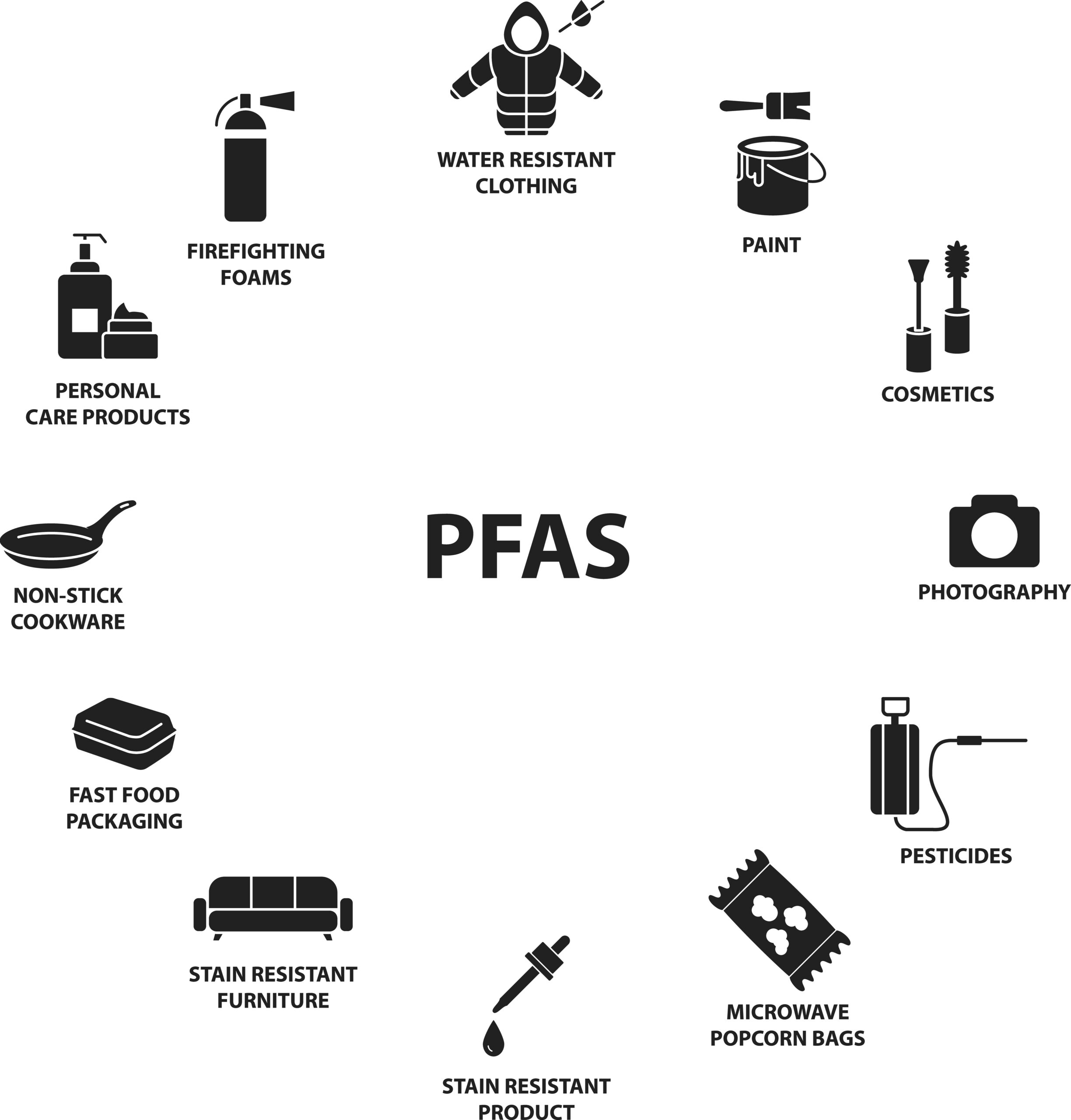
They may be the best illustration of the adage: Be careful what you wish for.
Those super synthetic chemicals that have made life in the modern era so seemingly fresh, so apparently clean, so temporarily safe, and so seductively easy are also highly suspect for degrading and shortening that life.
So-called PFAS (per- and polyfluoroalkyl substances) are in just about everything, everywhere, and no one knows for how long. They began entering the mainstream in the 1950s, as companies started turning chemical research into marketable products.
They have made their way into soil, air, and water supplies around the globe via such products as non-stick cookware, fire-fighting foam, and stain-resistant clothing.
To date, more than 9,000 PFAS have been identified in the environment, according to the National Institute of Health website. They exist in hundreds of common products and because of their structure, they tend to be super durable. Scientists don’t even know just how long it may take for many of them to break down and go away.
Meanwhile, people are breathing in PFAS and ingesting them through contaminated food and water. One report from the Centers for Disease Control and Protection, cited by NIH, found some level of PFAS in 97 percent of Americans.
Because of the complexity of combinations of the chemicals and the influence of other factors, it’s difficult to confirm direct correlations between any PFAS and a specific malady. However, there is a lot of circumstantial evidence of their ill effects.
Studies have established what the NIH calls “possible links” to a variety of human conditions, including altered metabolism, fertility, reduced fetal growth, an increased risk of cancer, and a reduced ability of the immune system to fight off infections.
The federal Environmental Protection Agency has been studying and warning about PFAS for decades. In 2021, it released its “PFAS Strategic Roadmap 2021-2024,” outlining a comprehensive approach to mitigating their impact.
Among the goals, as outlined in a progress report released last November, are:
- Developing updated national drinking water standards
- Expansion of drinking water testing to include monitoring 29 specific PFAS, which is to take place at thousands of systems nationwide in the next two years
- Continuing to develop methods of detection and measurement of PFAS
- Developing technologies for reducing the presence of PFAS in the environment
- Requiring information from synthetic chemical manufacturers about current and past production and disposal practices
The EPA’s Region 2 office, which includes the Virgin Islands, along with New York, New Jersey, and Puerto Rico, will hold what it is calling a virtual “listening session” to update the public on its progress. The session will be from 6 to 8 p.m. Virgin Islands (EST) time March 30. To join, go to: https://pfascommunityengagement.org/register/





